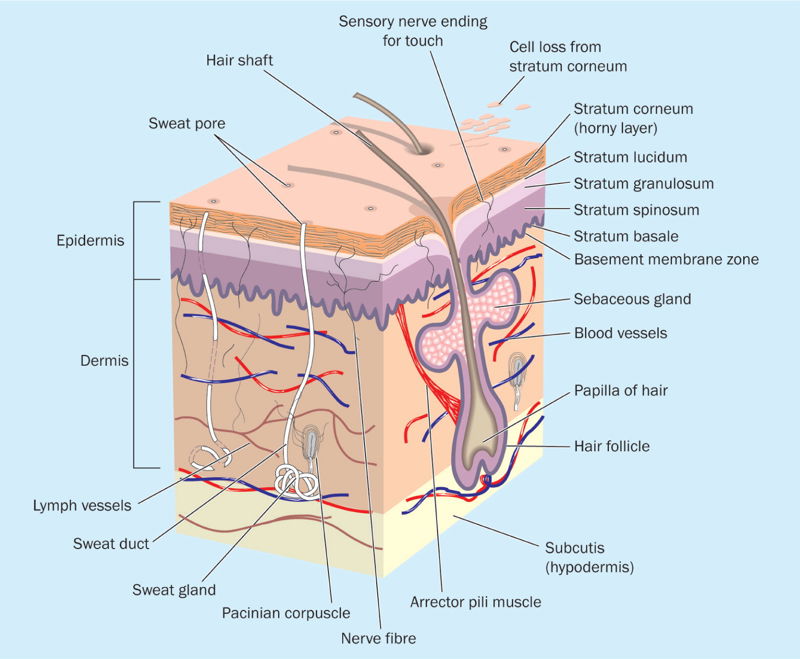Expand all
Collapse all
Purpose
One of the most common means of transmission of infection that is found in healthcare environments is touch; either directly by shaking someone's hand or indirectly by touching an object that has been previously touched by another person. Consequently, hands can be populated with an enormous number of microorganisms, which can be inadvertently transferred from surface to surface or person to person.
Hands are colonised by two types of microorganisms: transient and resident. The first are found on the skin surface, can move around and are readily acquired from contact with other body sites, people and the environment. Therefore, they are easily transferred to others. Resident microorganisms are the normal skin flora found in the deeper skin layers, hair follicles and sweat glands. These are more difficult to remove.
The World Health Organization (WHO, 2009a) highlighted that there are five key moments when the transfer of microorganisms can take place
To view the rest of this content please log in
Equipment
Various products can be used to ensure hand hygiene. Hands can be washed with liquid soap, antiseptic and antimicrobial solutions, or cleansed with antiseptic hand wipes or alcohol hand solutions (National Institute for Health and Care Excellence (NICE), 2017).
Washing with soap, which has been traditionally recognised as the best way to decontaminate hands, removes transient microorganisms and makes the hands socially clean.
Antiseptic solutions, such as chlorhexidine and iodine, have been shown to have a residual effect, often continuing to work after they have been applied and reducing both transient and resident microorganisms. Therefore, they are routinely used before surgery, invasive procedures and during outbreaks of infections. More recently, alcohol hand gel has proven to be an effective product that can be used alongside, or in some cases, as an alternative to soap and water (Gould et al, 2010).
Alcohol can be routinely used, because it kills both transient and resident microorganisms, is quicker to use, does not require washing facilities and can be provided at the point of care (Loveday et al, 2014; NICE, 2017). However, although alcohol gel is an effective product for decontaminating hands, it is imperative that health workers fully understand when it is not appropriate to use, for example when the hands are visibly soiled, if the patient has a
To view the rest of this content please log in
Assessment
Hand health
Skin, which is the largest and principal organ of the body, is a multifunctional membrane structure with a primary role in protecting the body surface from pathogens (Patton et al, 2023). It is composed of three layers — the epidermis, dermis and hypodermis (subcutaneous) —which are subdivided further into layers (Figure 2) (WHO, 2009a).

The outermost layer is the epidermis, which is regularly replaced and renewed every 30-35 days by the process of replication and detachment (Cook et al, 2021).
The most outward sublayer of the epidermis is the stratum corneum. It is this layer
To view the rest of this content please log in
Procedure
Handwashing preparation
Before hands are washed it is essential that additional precautions are undertaken to increase the efficiency and effectiveness of the handwashing procedure. The following information has been collated in response to questions asked by students during handwashing teaching sessions.
Why is it important to have bare arms below the elbow?
Being bare below the elbow is necessary in order to ensure adequate washing of the wrists and forearms (if required). The sleeves of clothing, jewellery and watches also pose a risk because they act as temporary reservoirs for pathogens and increase the possibility of cross-contamination (NICE, 2017; Lister et al, 2020).
What happens if I do not dry my hands properly?
Ensuring that the hands are dried thoroughly is vital, because microorganisms thrive in a warm moist environment. Inadequate drying may therefore cause damage to the stratum corneum (WHO, 2009a; Lister et al, 2020).
Can I wear acrylic
To view the rest of this content please log in
NMC proficiencies
Nursing and Midwifery Council: standards of proficiency for registered nurses
Part 2: Procedures for the planning, provision and management of person-centred nursing care
9. Use evidence-based, best practice approaches for meeting needs for care and support with the prevention and management of infection, accurately assessing the person’s capacity for independence and self-care and initiating appropriate interventions
9.3 use effective aseptic, non-touch techniques
9.6 use evidence-based hand hygiene techniques
To view the rest of this content please log in
Resources
To view the rest of this content please log in